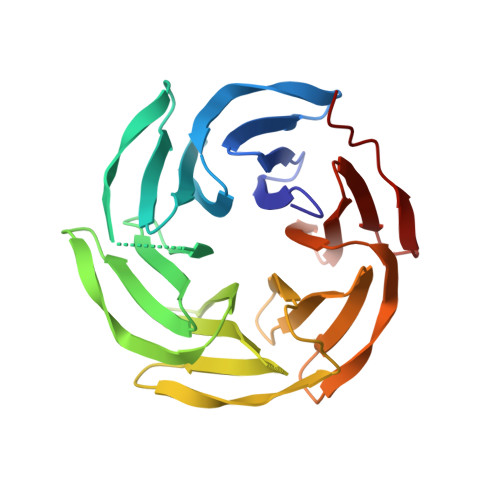Membrane Deformation by Neolectins with Engineered Glycolipid Binding Sites.
Arnaud, J., Trondle, K., Claudinon, J., Audfray, A., Varrot, A., Romer, W., Imberty, A.(2014) Angew Chem Int Ed Engl 53: 9267
- PubMed: 25044646
- DOI: https://doi.org/10.1002/anie.201404568
- Primary Citation of Related Structures:
4CSD - PubMed Abstract:
Lectins are glycan-binding proteins that are involved in the recognition of glycoconjugates at the cell surface. When binding to glycolipids, multivalent lectins can affect their distribution and alter membrane shapes. Neolectins have now been designed with controlled number and position of binding sites to decipher the role of multivalency on avidity to a glycosylated surface and on membrane dynamics of glycolipids. A monomeric hexavalent neolectin has been first engineered from a trimeric hexavalent bacterial lectin, From this neolectin template, 13 different neolectins with a valency ranging from 0 to 6 were designed, produced, and analyzed for their ability to bind fucose in solution, to attach to a glycosylated surface and to invaginate glycolipid-containing giant liposomes. Whereas the avidity only depends on the presence of at least two binding sites, the ability to bend and invaginate membranes critically depends on the distance between two adjacent binding sites.
Organizational Affiliation:
CERMAV, CNRS and Grenoble Alpes Université, 38000 Grenoble (France).
















